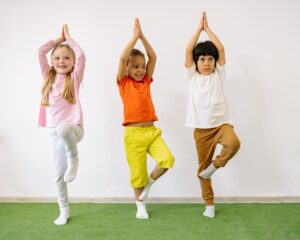
I’ve just started doing Pilates. And I think it’s fair to say that in a class of 20, there are probably 18 people fitter and more supple than me. And most of them are significantly older (as in mainly retired).
I would have given up by now, had it not been for the approach of the teacher.
After the easy warm up stretches are over, she demonstrates more complex poses. These positions require stamina and strength. But rather than leave some of us to falter, she gives us a range of options:
‘Lie on your back and raise one leg in the air, straighten it and hold. This is the basic position.
If you want to make this harder, then extend both legs at the same time. If you want even more of a challenge, you can raise your neck to your chest’.
As well as providing a least 3 options per move, she also gives us permission to experiment, and makes sure that we don’t push ourselves too far:
‘Feel free to try and see which of these moves work best for you. You can alternate between them. Use a block underneath your head or back to make it more comfortable if you wish. Remember to take a rest in the child pose at any time if it becomes too much’.
With a range of options, encouragement to experiment and permission to stop when I need to, I alternate breathlessly between the basic and intermediate moves. Occasionally I even try the advanced move for a repetition or two before collapsing in a heap and having a rest.
My teacher’s inclusive and empowering approach enables me to participate despite my skill level being much lower than others in the class.
Can this approach be applied to PE lessons?
What would it look like to provide children with a range of options suitable for different skills levels? Now, I know that differentiation is something that you are all familiar with, but often you, the teacher, decide what group the child works in, or what level of work they access.
In this scenario, the children decide what level they are working at.
Imagine the scene below:
You are teaching balancing moves in a Key Stage 1 Gymnastics unit. You demonstrate a move, and give the children a range of options to make that move easier or more challenging. ‘If this move is a bit tricky, try touching your foot on an off the floor rather than leaving it in the air.’ If that’s a bit easy, try leaning forward to make the pose harder.’
You are teaching ball skills. You give the children the choice of what size racket and ball to use and how close to stand to their partner.
How do you think this approach would help the child who has co-ordination or confidence difficulties? The child who is reluctant to participate or who has a physical difficulty?
Is this something you already do in your class? Could you try it in your next lesson? I’d love to hear how you get on.

